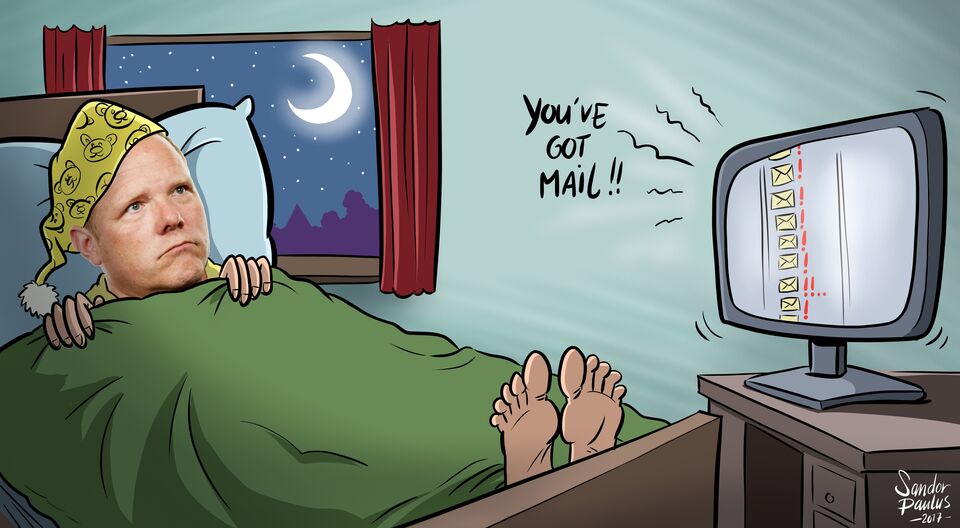Brainmatters | First aid for email
I receive between 100 and 200 emails per day. Every day. Whereas I may think that that is a lot, it does not appear to be exceptional. Once I have relegated the large quantities of spam, newsgroup facts and ‘reply-to-all’ mails to the digital Walhalla with a fine swipe, there are still dozens of emails left that I do need to do something with - read, a short response, a more extensive action, or in any case save them until I get round to them. If I do get round to them, of course, for there’s the rub.
My days are filled largely by meetings with colleagues or students, preparing and presenting lectures, or meeting people in yet other ways. The time I spend behind my desk is limited and divided roughly between grading papers, editing articles and occasionally working on a research proposal. When I look around at my colleagues, I am no exception in this respect. Meanwhile the unread and unanswered emails are stacking up. It is a familiar source of guilt, frustration and stress.
It is estimated that knowledge workers spend about a quarter of their time on reading and answering emails, which is about 50% for civil servants. A recent survey among 400 knowledge workers in the USA showed that 80% of the respondents already check their email at home in the morning; 30% do so as soon as they wake up, in bed.
The unwritten etiquette within many organizations, for which the smartphone can be held accountable, is that you always need to be reachable and responsive. The paradox is that we do not become any more productive from being reachable full-time. Research has shown that people who have trouble leaving things as they are become less productive eventually and burn out sooner. So switch off those push messages. Check your email only at fixed times, only during working hours, and never in bed.
The tsunami of email begins with those who press the ‘send’ button, which includes myself. A good rule to decide whether or not to send an email, is whether you would also send that message if you could only use the old-fashioned snail mail. Which involves writing a short letter for each addressee separately, finding an envelope, sticking a stamp on it, and so on. If yes, that’s fine. If no, then don’t. And pretty-please-with-sugar-on-top: first count to ten before you press that diabolical ‘reply-to-all’ button.
Finally, a request to all managers, from Rector to dean, from group leader to Director: do not send any emails to employees during the weekend. Or late at night. Set a good example and show that you respect peace and recovery. It will improve the quality of your own sleep as well.
Wijnand IJsselsteijn | Professor of Cognition and Affect in Human-Technology Interaction


Discussion